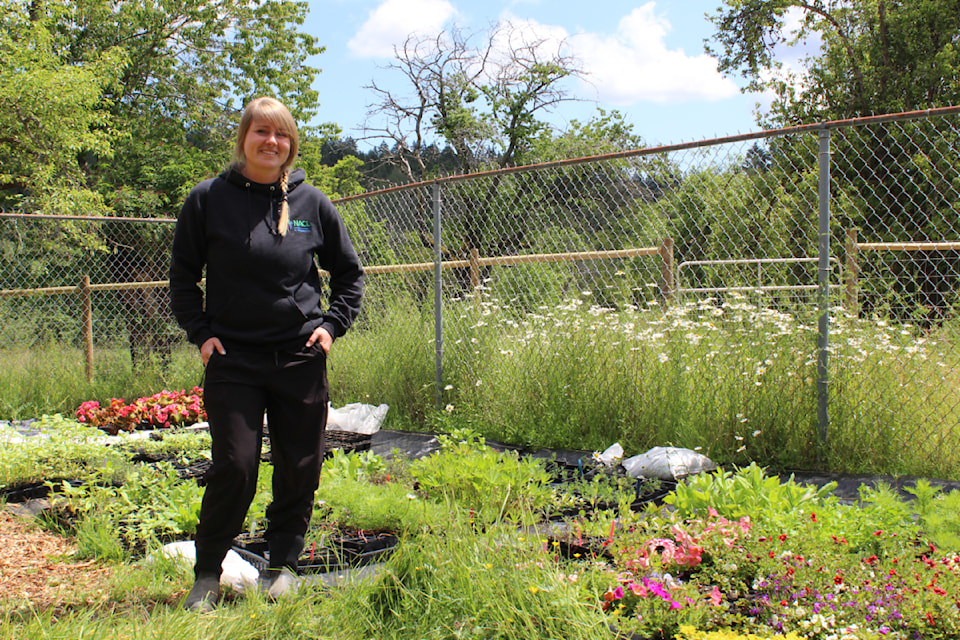B.C. has more than 500 different species of native bees, yet nobody knows which variety of these species exist on Vancouver Island.
That's why Bonnie Zand started the Vancouver Island Pests, Pollinators and Beneficials project, research aimed at creating a checklist of the bee species in and around the Island's agricultural systems.
Zand called it "basic, baseline information."
"In the future we can repeat this and see whether or not we lost species, or if new species have appeared," she said. "Right now it's very hard to know how the bee populations in these agricultural systems are doing, since we don't even know what populations are there."
Zand started the project in 2021, collecting samples of native bees from 19 different farm sites across the Island over that year and the next, during spring, summer and fall. Areas included Cowichan Valley, Comox Valley, Victoria, Black Creek, Nanaimo, Qualicum Beach and Merville.
"As part of that we had some funding to put out some traps and collect some samples but there wasn't funding within that project to actually sort the samples... and analyze that data. That's what I'm doing now, is the rest of the work that was collected with the samples a couple years ago."
Participating in the survey locally was Growing Opportunities, a non-profit community co-operative farming organization in the Westwood area. Sabrina Anderson worked as the site's farm manager during the data collection process.
"I think there has been a long-standing mentality on farms that you clear out the native species and replace it with a more managed eco-system," Anderson said. "Now I think the understanding is that these wild spaces on the farm are just as important as the cultivated spaces. As growers, land managers and sort of caretakers it's our responsibility to really understand those habitat zones and how to protect them."
The preliminary data from the survey hasn't just been used for bees. Due to the pests found in the program's traps and the timing of when they were found, Growing Opportunities was able to form a response.
"Flea beetle was one of the pests that she was monitoring and we saw that our flea beetle population really peaked in August," Anderson said. "Often that's sort of when our fall crops mature and we get this sense of panic, 'Will the flea beetle move from our spring crops into the things I need to grow into the winter?' We found no, if we were just patient the pests were peaking but the [flea's predators were] right behind it."
Anderson said she looks forward to reviewing the bee data to come.
"Just to sort of understand a bit more about what species we have here and what habitats they live in and what we need to do to support that and amplify those communities to be successful here."
So far Zand has identified seven different bumblebee species found throughout most of the farms which include the western bumblebee, the yellow-fronted bumblebee, the fuzzy-horned bumblebee, the yellow-faced bumblebee, the sitka bumblebee, the black-tailed bumblebee and bombus vancouverensis.
The western bumblebee has been designated as a threatened species in Canada since 2014.
"It's really great that we're seeing this on some farms but that's something I'll be interested to repeat this maybe 10-15 years from now and see if that species is still present," Zand said.
She is also looking for invasive species that have been present on the Lower Mainland, such as eastern bumblebees which were introduced as greenhouse pollinators 30 years ago. So far none of the samples have shown their presence.
"That's going to be really interesting if that shows up and how that might change the pollinator composition on these farms."
While many people might think of the large, fat bumblebee when thinking of native bees, which are easy to spot, Zand pointed to some species that prefer to nest solitarily in the ground or on stems, causing them to go unnoticed.
"They can still play really important roles in pollination and so that's one of the focuses this year is seeing what other species are present."
Zand's work has been funded through grants and donations, including Natural Resource Canada's climate change adaptation program. To find out more, people can check out the VIPPB website at http://mailchi.mp/vifarmmonitoring/welcome-to-vippb.
Her goal is to have an updated native bee checklist ready for this fall, and a larger report ready in the new year.
"I would just like people to know and to understand how important native bees are on pollination on farms. Often we really focus on honeybees, and there is a lot of time and effort and research spent learning on how honeybees are," Zand said. "No-one is really doing that for native bees, especially on Vancouver Island where we have … small farms that are diverse and are a mix of agricultural and natural areas."

